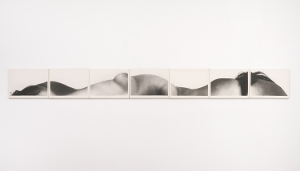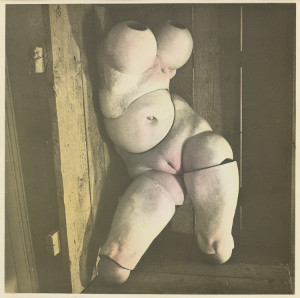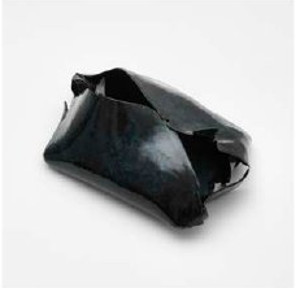CURATOR'S CHOICE SM
Exhibition Reviews
| Home | | Museum
Guide | | International |
| Theater |
| "That Obscure Object of Desire" With animate and inanimate provocative
woman's body images, By Claire Taddei
From August 14 to October 4, 2014 Luxembourg & Dayan gallery presents "That Obscure Object of Desire," an exhibition which explores the dark side of desire and the woman's position as an object of fantasies, frustrations and fetish. Rightly chosen, the title is borrowed from Luis Buñuel's film. The film speaks about the obsession of possession which rises to a psychotic state. Buñuel describes the mechanism of an infinite desire, almost to the limit of death, even while the film is pursuing another obscure object of desire: terrorism, which surfaces in various forms, moral, social, cultural, economic, and psychological. This exhibition is considerably marked by Surrealism and seems to follow the definition given by André Breton in the "Surrealist Manifesto" in 1924: "A pure psychic automatism, by which we express (...) thought, in the absence of any control exercised by reason, exempt from any aesthetic or moral concern (...)." "That Obscure Object of Desire" also refers to our mechanism of unconscious sexual drives and repressed desires, in the Freudian sense. The exhibition allows the spectator to give vent to his darker thoughts. The artists selected for this exhibition experiment with Woman's Body to better understand the essence of desire. Their aesthetic positions differ, but their philosophic choices seem to be similar. Works by artists including Robert Heinecken, Hans Bellmer, Dorothea Tanning and Anthea Hamilton take us on an experimental trip through the magnification of the unconscious. The logic of the exhibition questions sex as both an object of consumption and a performance concept. Its questioning is emphasized by a gradual deconstruction of the woman's body. The body is increasingly obliterated throughout the exhibition, finally reaching a fluid state with "Leakage Industries: Soft Screw" by Alisa Baremboym. "That Obscure Object of Desire" starts with the series photos,
"Figure Horizon #4" by Robert Heinecken. This work can remind
us Heinecken's famous series of photographs, "Le Voyeur,"
whose the title refers to one of his favorite novels, the 1955 mystery
"Le Voyeur" by the French writer Alain Robbe-Grillet. "Figure
Horizon #4" gives tone to this exhibition by arousing a perverse
curiosity in the spectator. The correlation with his series "Le
Voyeur" can give us an interpretative key to this artwork and the
whole exhibition. Indeed, by seeing chunks of woman, the whole body
is left to our imagination and our fantasies. These fragments of the
body are like particles of desire, they question woman's body as an
object of fetish. They also question the role of the spectator. Our
curiosity is aroused by the frustration due to a lack of totality and
that places us in the position of a deviant person, of a voyeur.
On the floor we find works by the artists Anthea Hamilton and Julie Verhoeven, who use female images and re-size them in order to create installations that are close to theatrical scenery, in which woman is reduced to the state of decoration for design objects. The silhouette is perfect and the body is innocent. The look is between nonchalant and provocative. Sometimes the woman is immersed in an ostentatious garden of Eden where the apple is already consumed. Sometimes she is like a muse waiting for a somebody.
Dorothea Tanning dares to invert the erotic perspective in art. Her works express woman's fantasies. Woman is considered as a unique individual and not just as a projection of man's desire. She is represented with surrealistic objects in the style of Meret Oppenheim and prints on Japan paper which evoke a Kama Sutra revisited. Certainly, Hans Bellmer embodies the most interesting approach, but also the most radical, to the dark side of desire. Bellmer uses doll components to re-arrange women's body parts like an anagram, trying to understand the occult reality of woman. With "La Poupée" ("The Dolls"), Bellmer tries to discover the mechanics of desire and unmask the physical unconscious which controls us. He does that to put at its paroxysm the state of objectification of the body. His "Poupée" is childish, but also a victim of sadistic perversions, dismembered and assaulted; it is erotic and represents an artificial creature with a multitude of anatomical potentials. Bellmer's works stand as a poetic affirmation of Surrealism but in its most extreme way. The doll's body expresses a dream world where an alliance of contraries is possible. His aesthetic reverberates with Freud's Das Unheimliche (which can loosely translate in English by the "worrying strangeness"), putting the work between eroticism and death, between the animate and the inanimate.
An abstract vagina sculpture by Hannah Wilke (seen to the right) and an amalgam by Alisa Baremboym (shown at the top of this article) embody the utilitarian idea that anything can potentially be a tool. These works conclude the exhibition and bring home the purpose of the quest of logic of desire: its political meaning.
In no case in this exhibition is Woman reduced to an only ostentatious
object. On the contrary, Woman is magnified by the obsession which She
arouses. On this point, her condition is denounced. Behind these works,
which try to dissect the woman's body to have a better possession of
it in order to ward off its power and demystify it, is hidden the perversity
of a society which has raised desire to a state of omnipotence, but
which has never as much fed off loneliness and violence. This exhibition
seems to interrogate a hedonistic ideology which alienates woman and
kills desire; a sort of impoverishment of desire which looses its substance.
The exhibition shows that there are many approaches to desire in many
opposing senses. Indeed, sometimes we are desirous of desire just because
we love be in a state of desire; a state which raises us above the platitude
of life.
Claire Taddei is an independent art critic from France.
If
you go:
|






